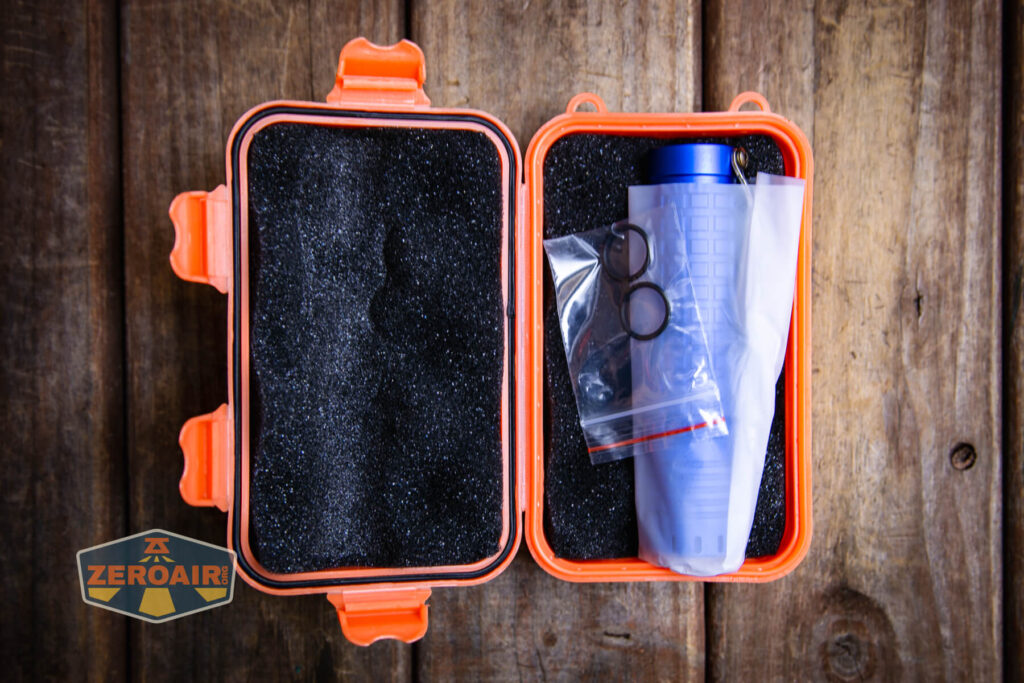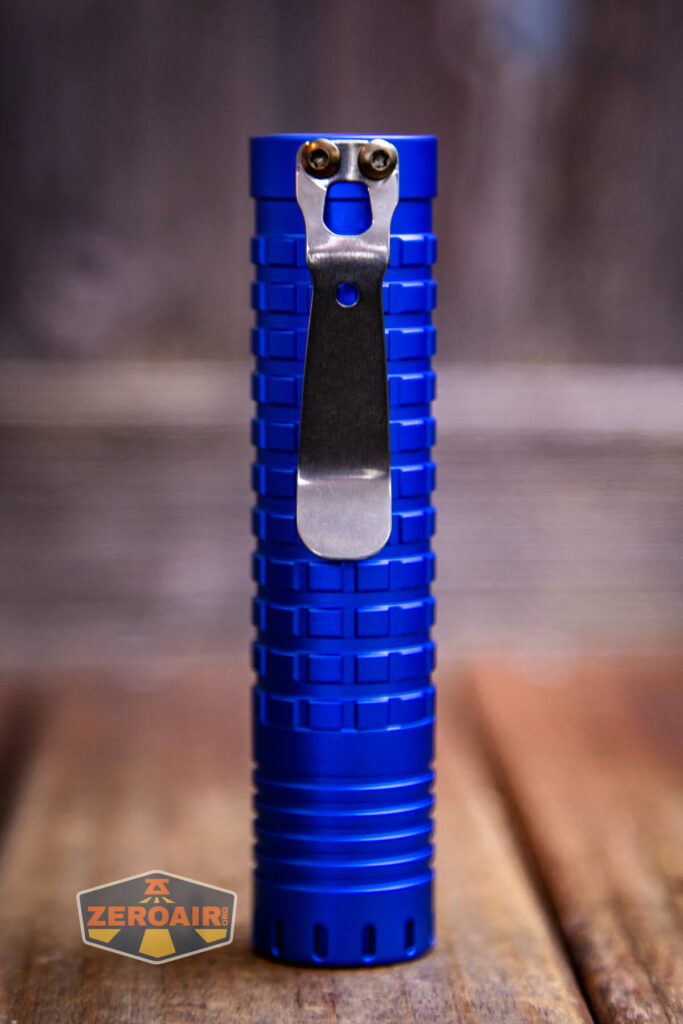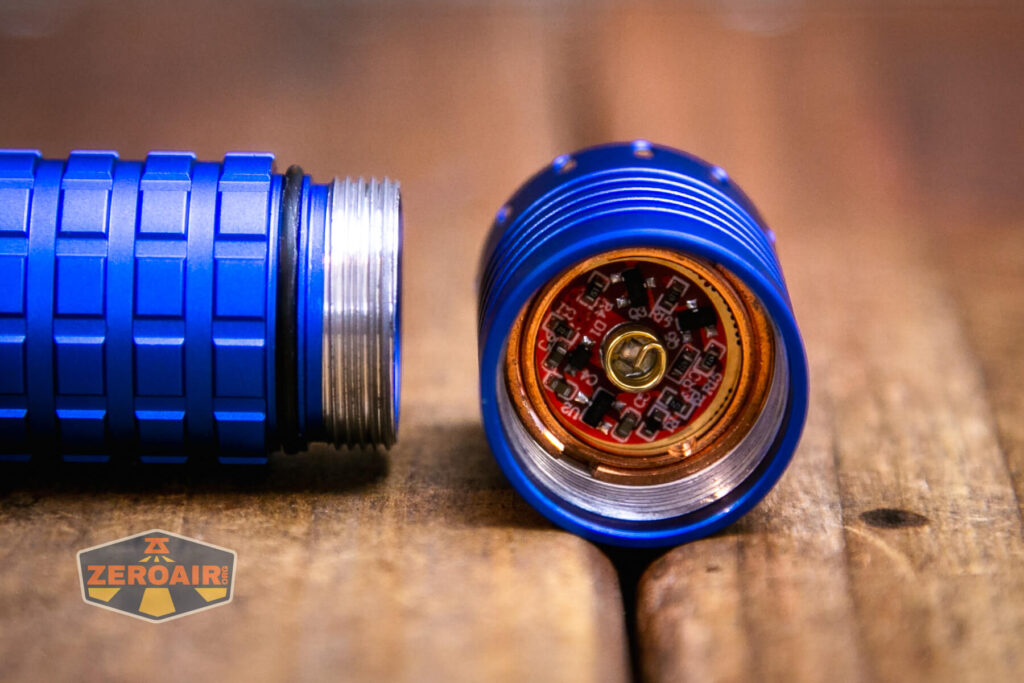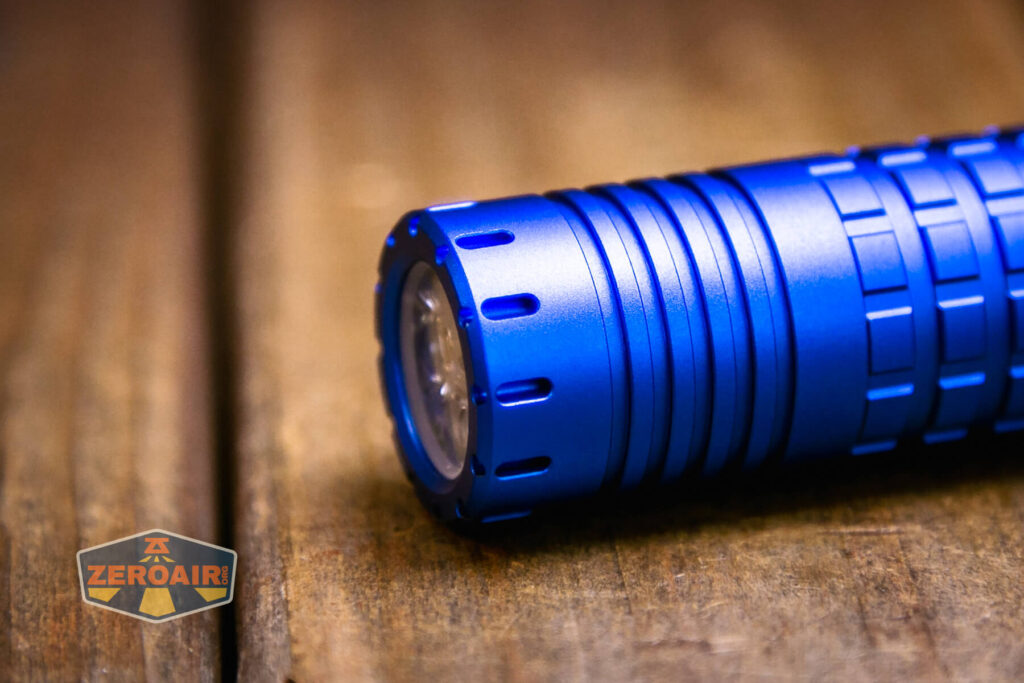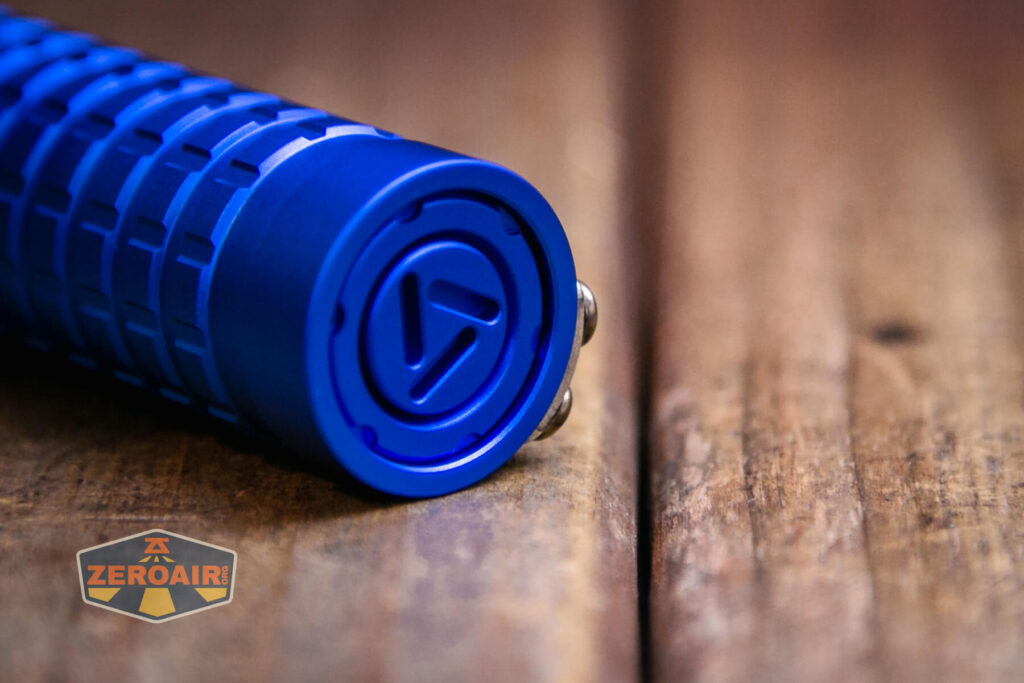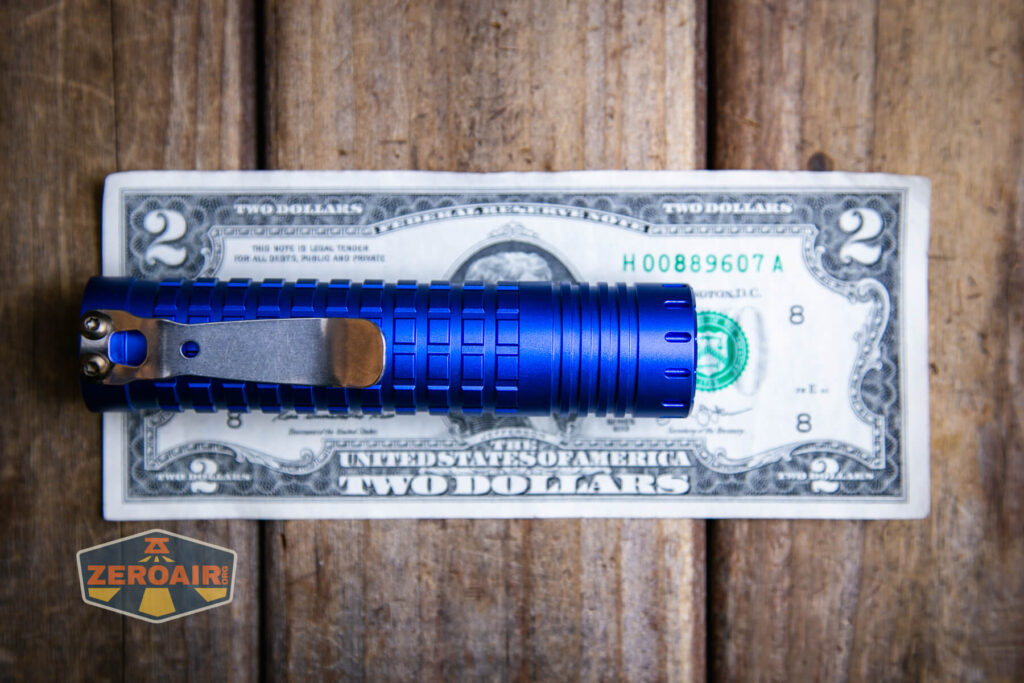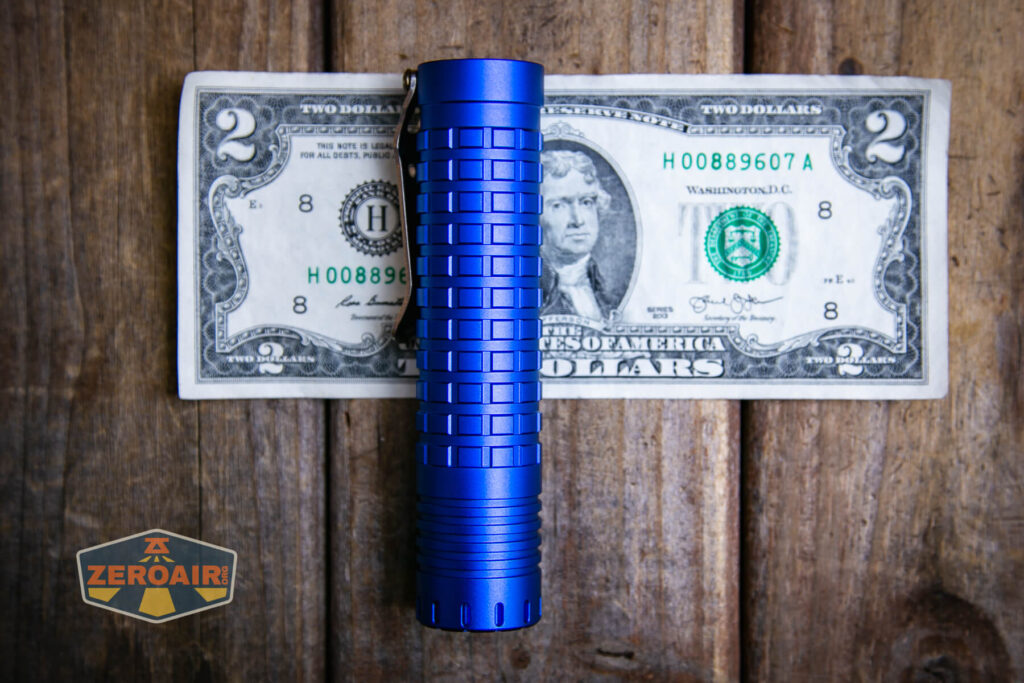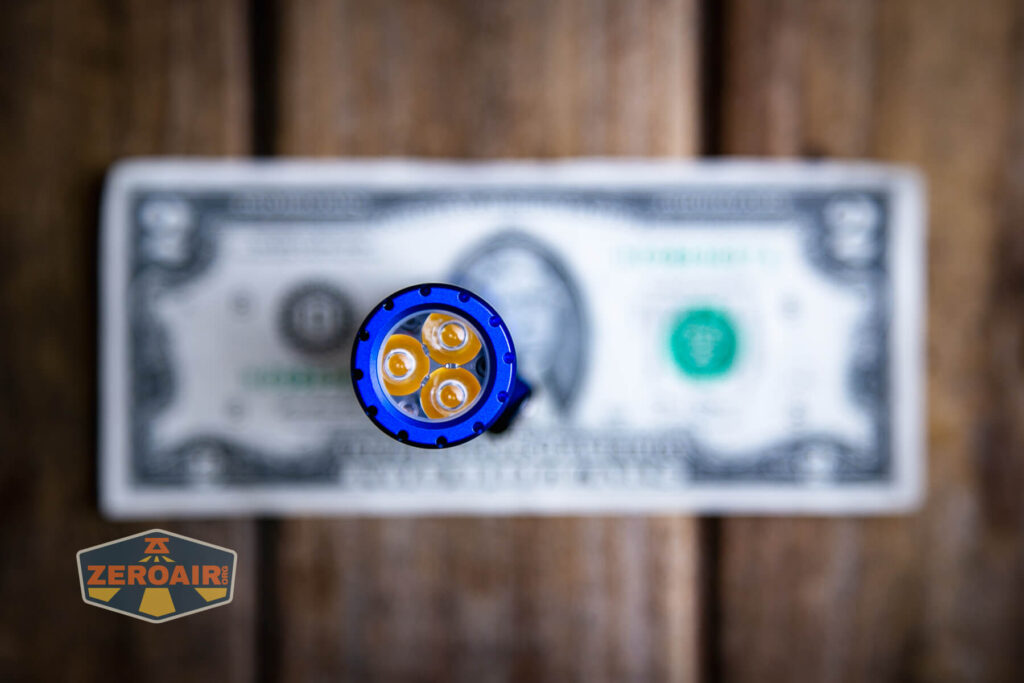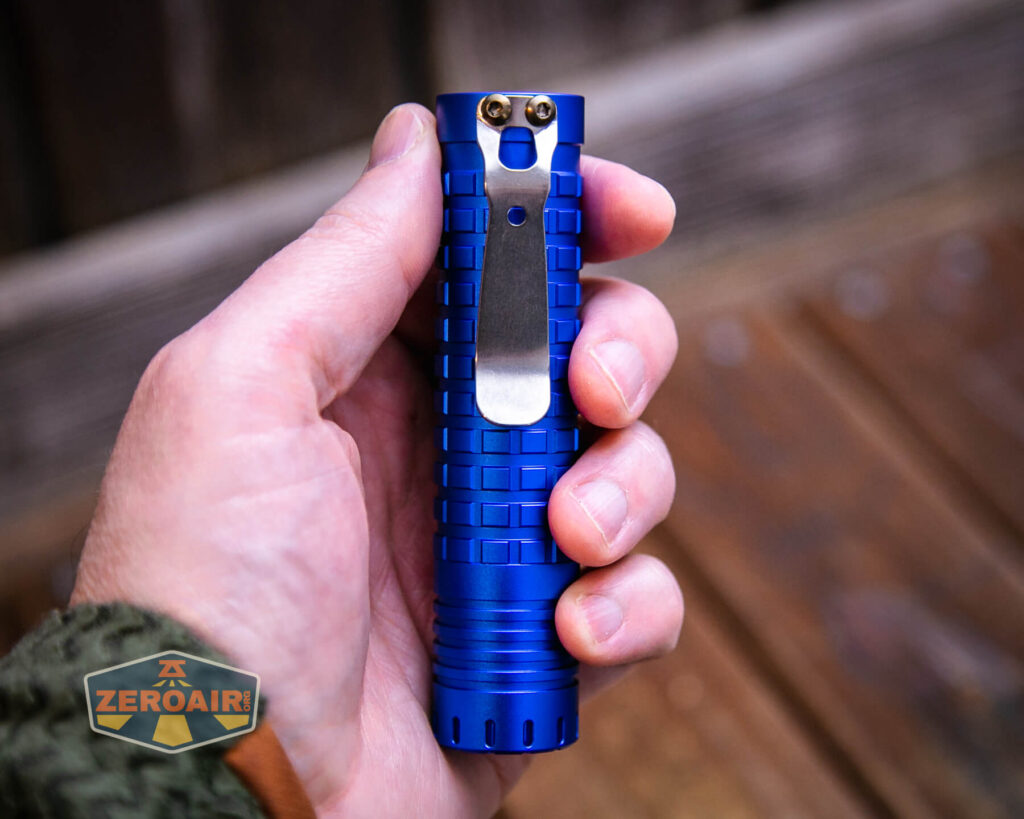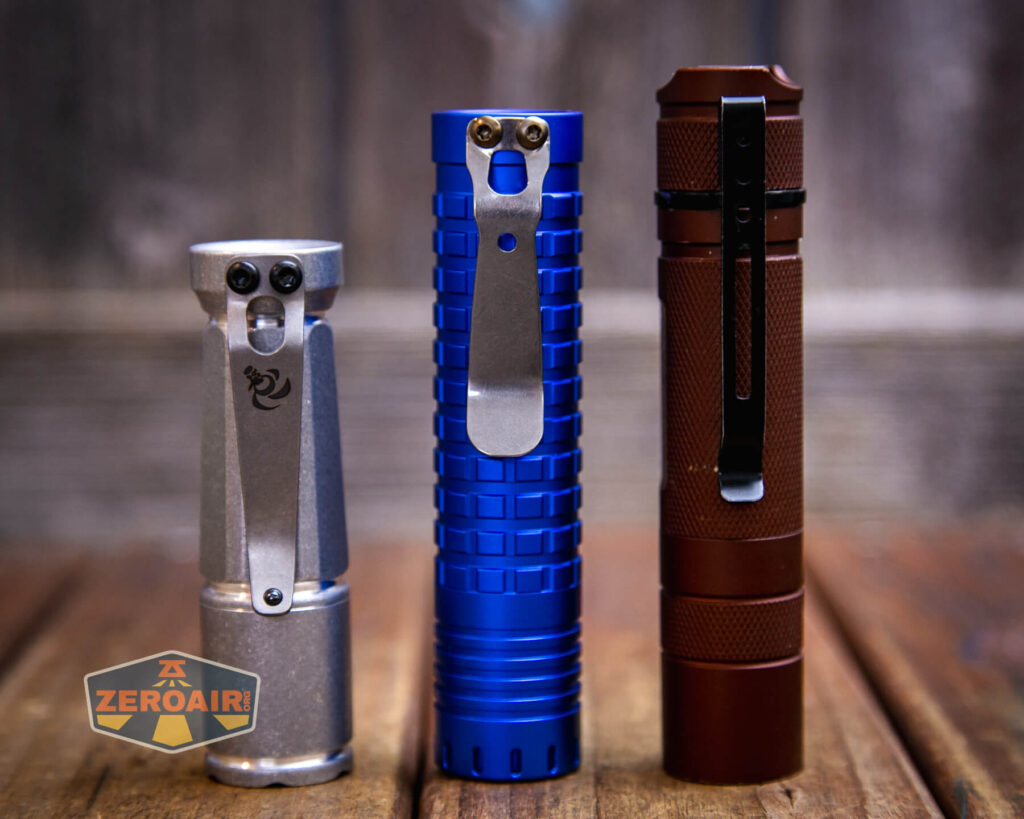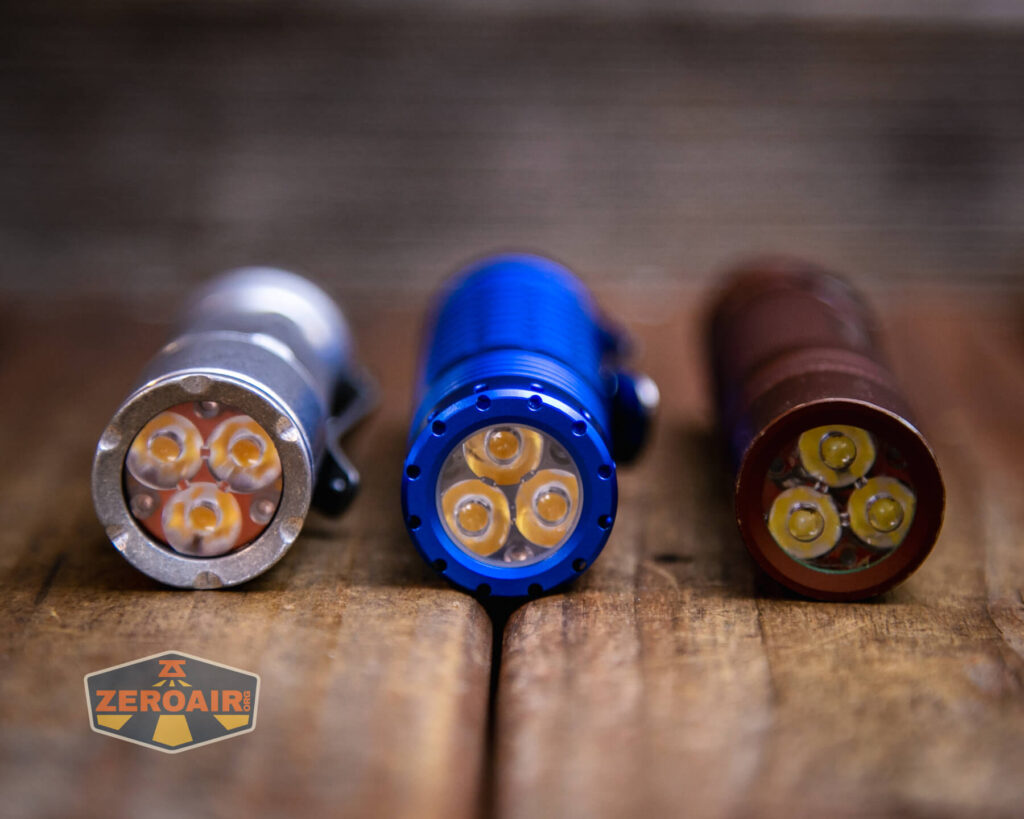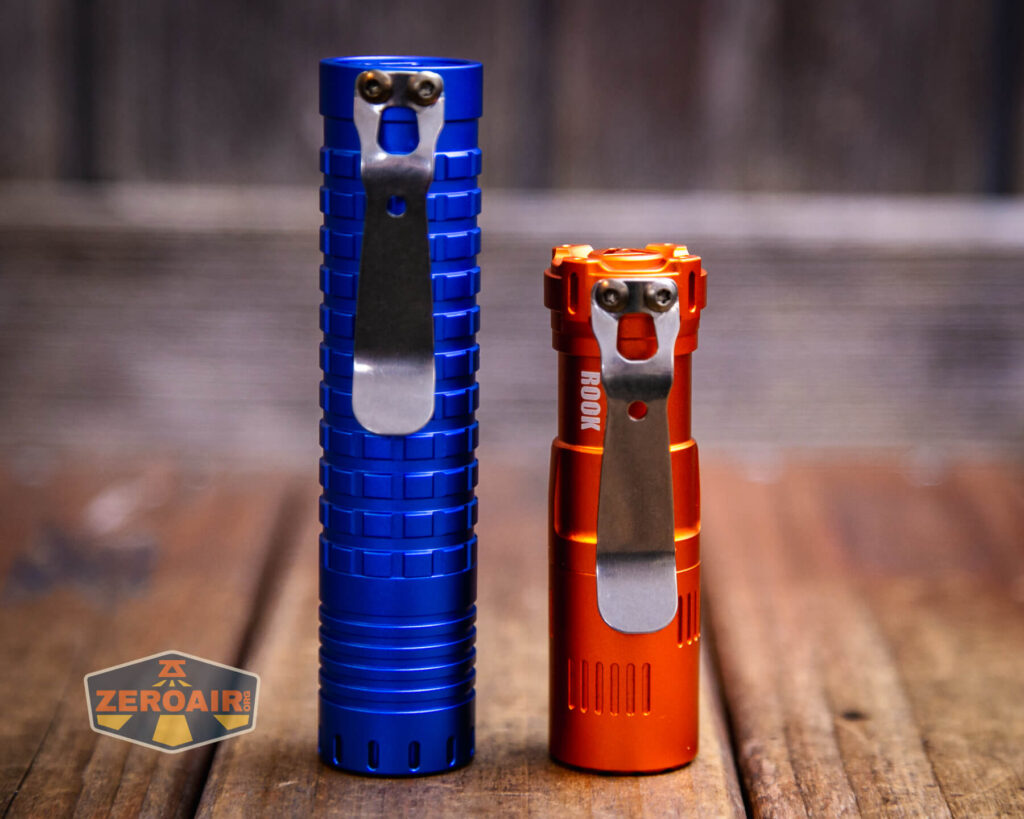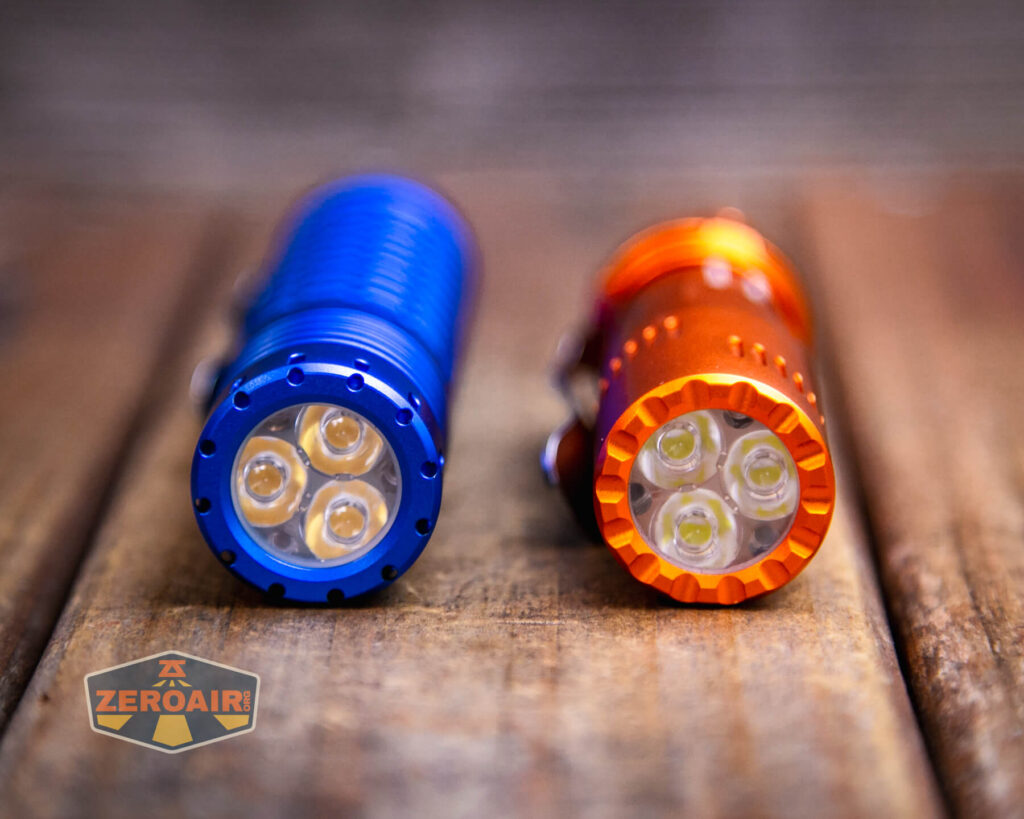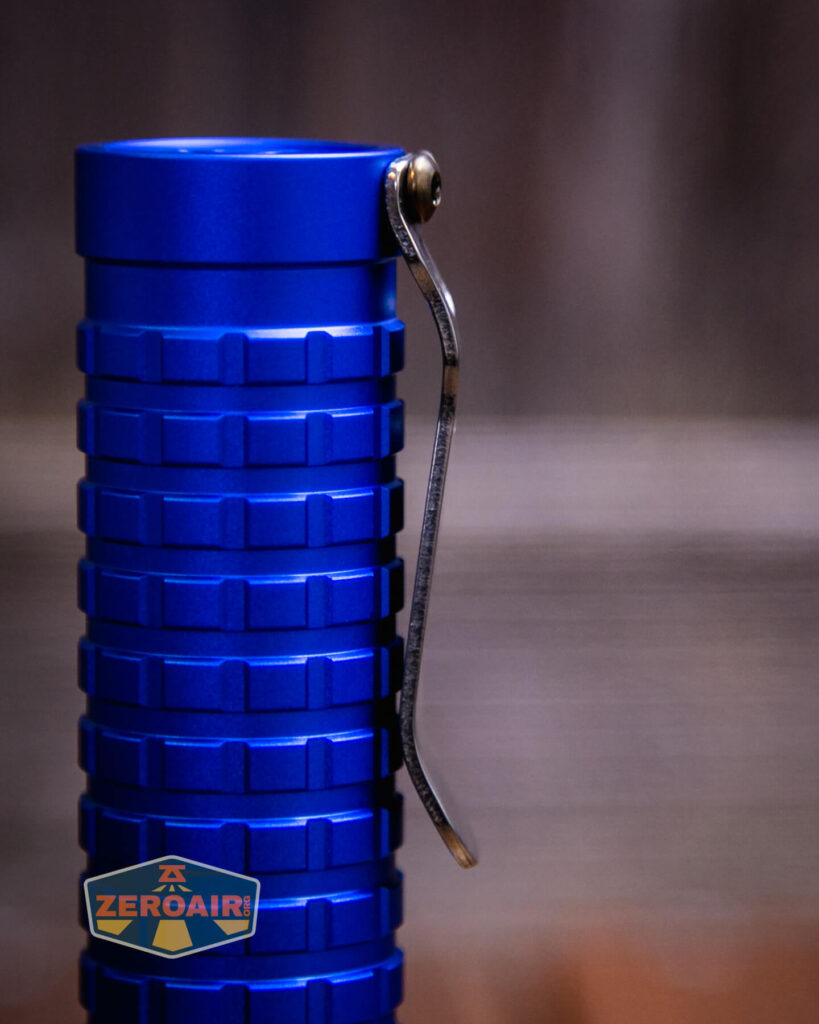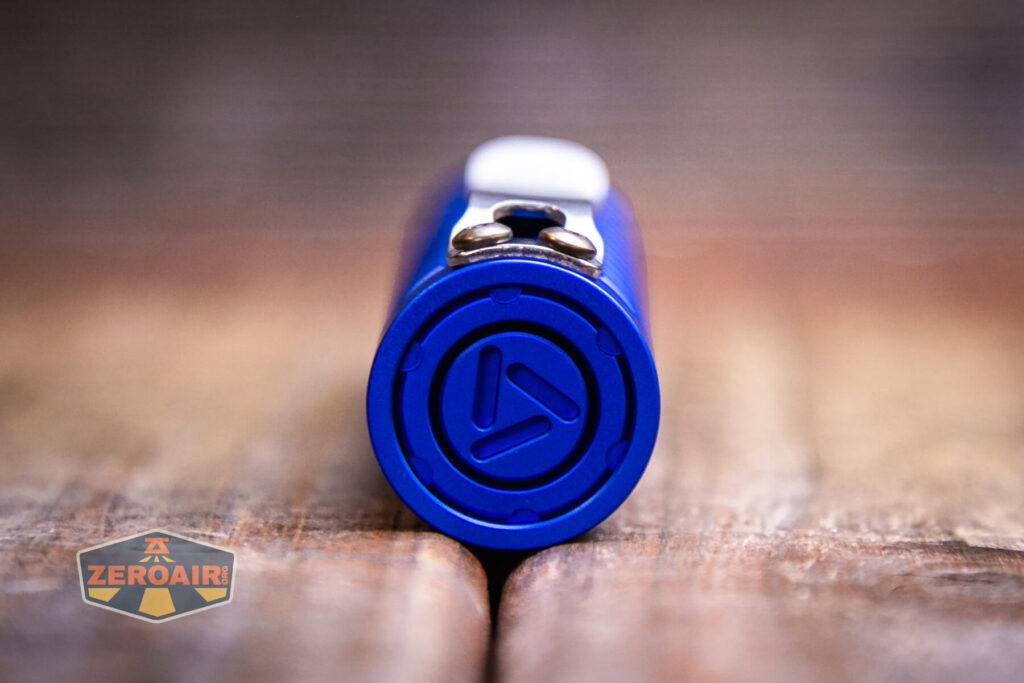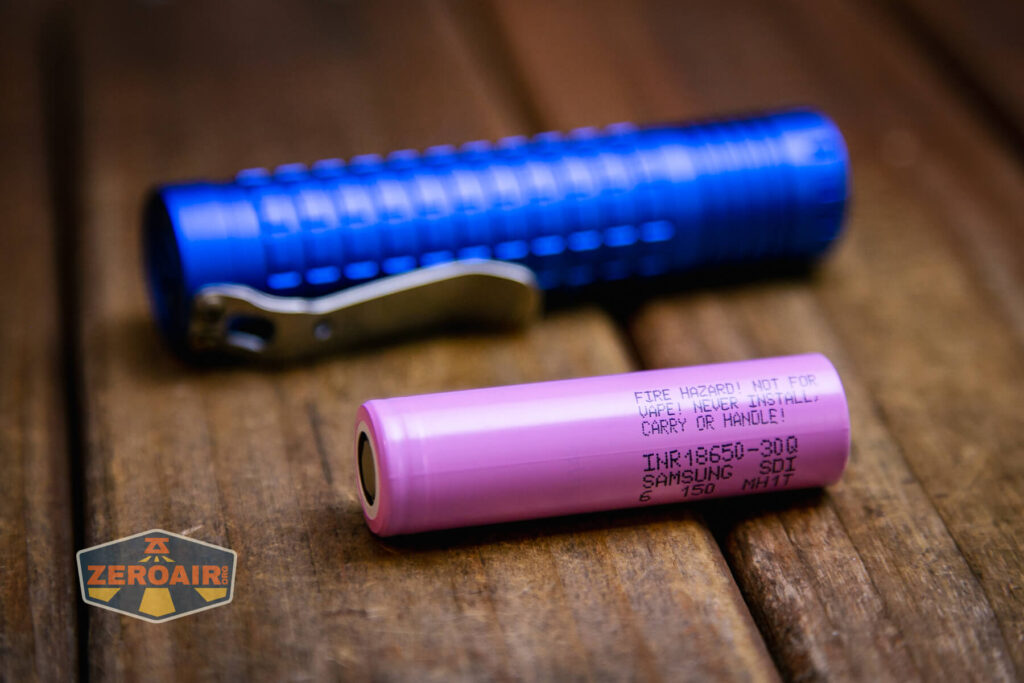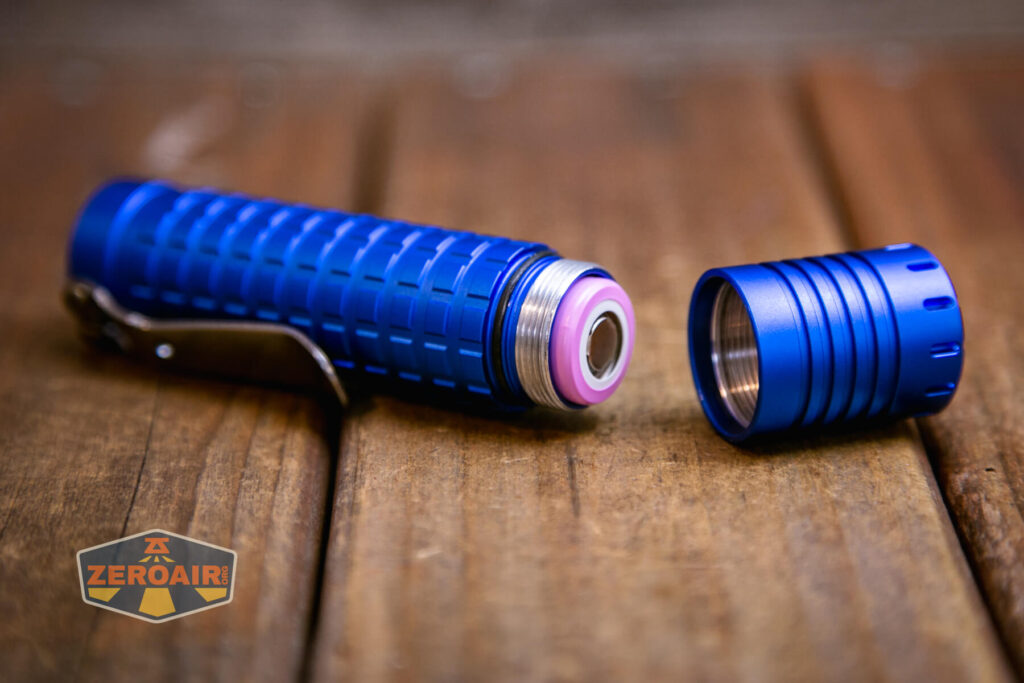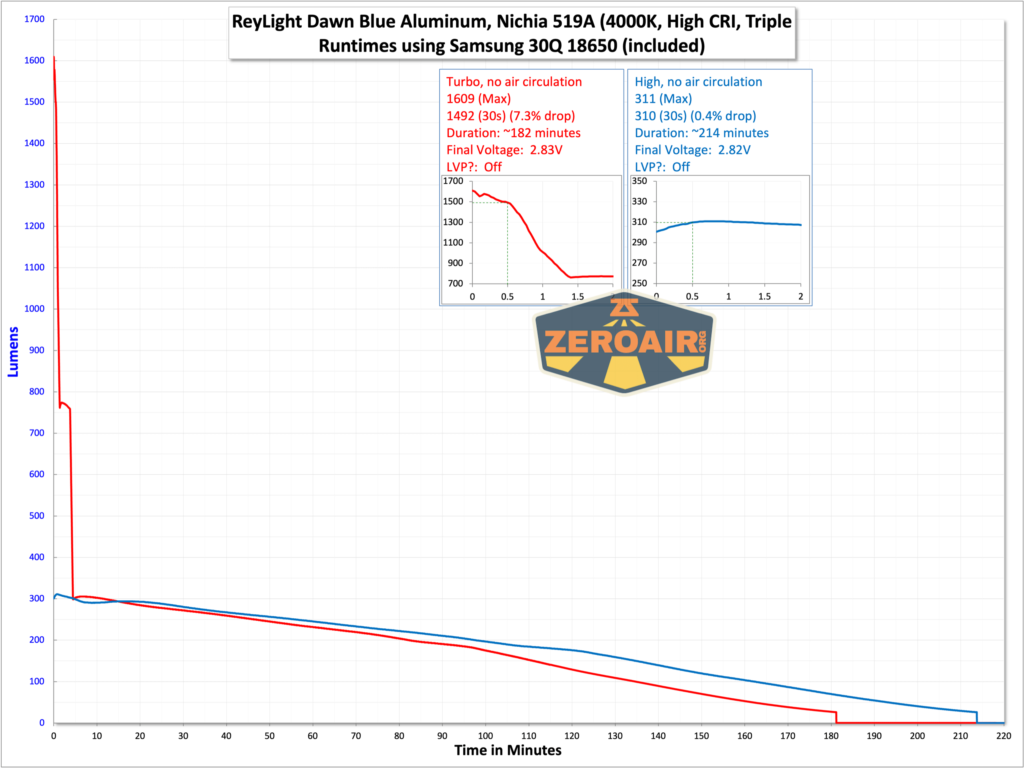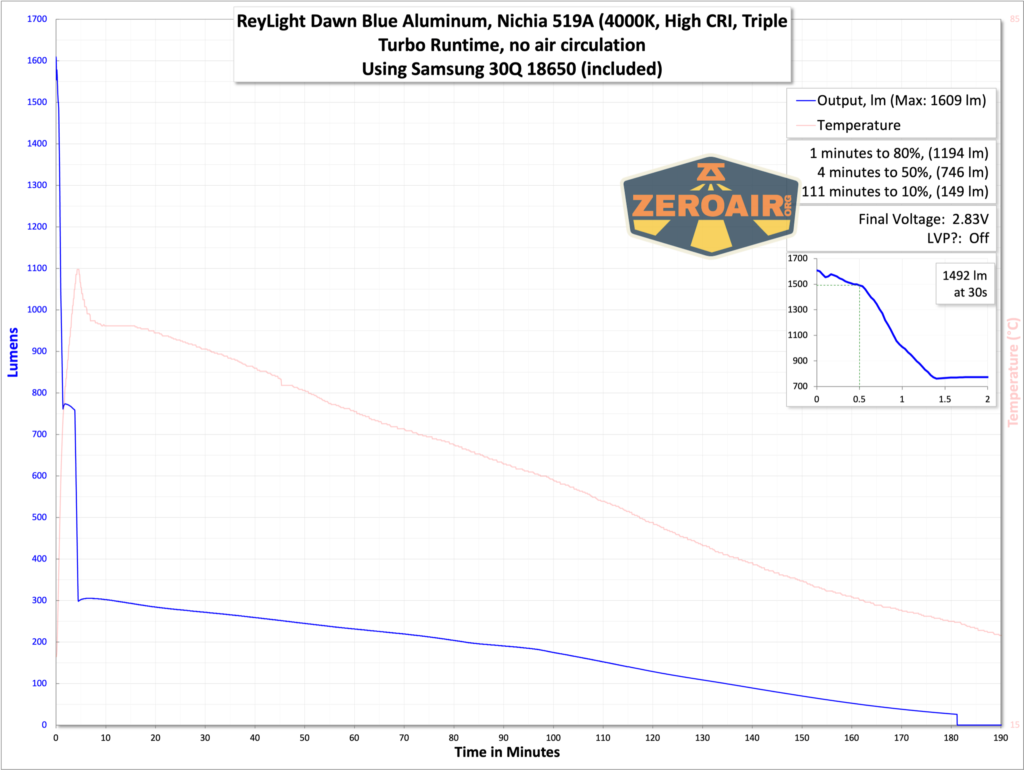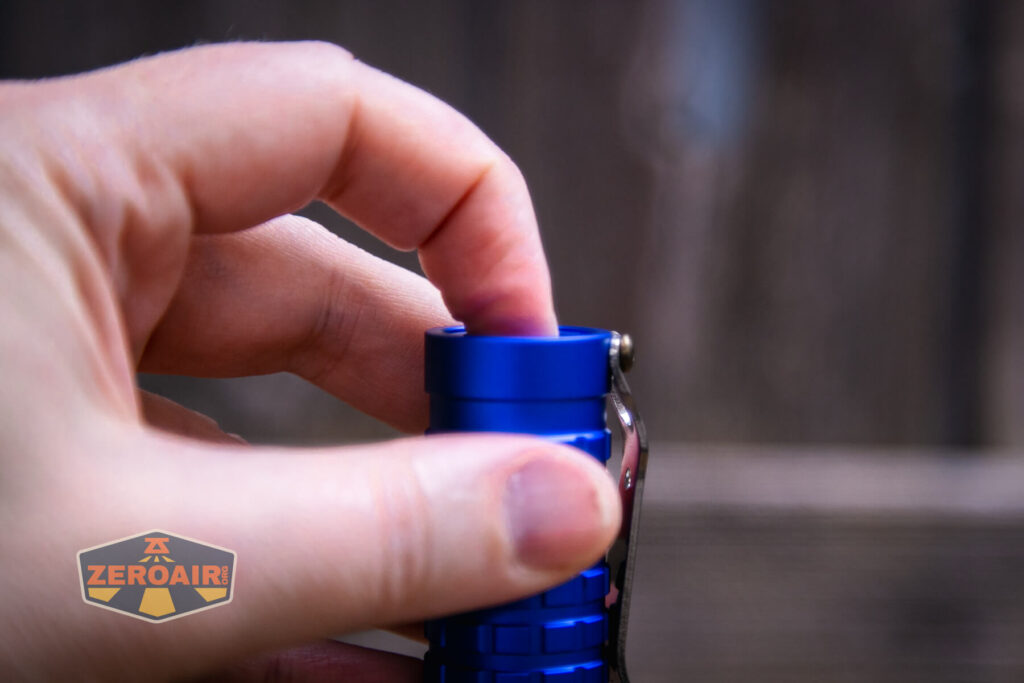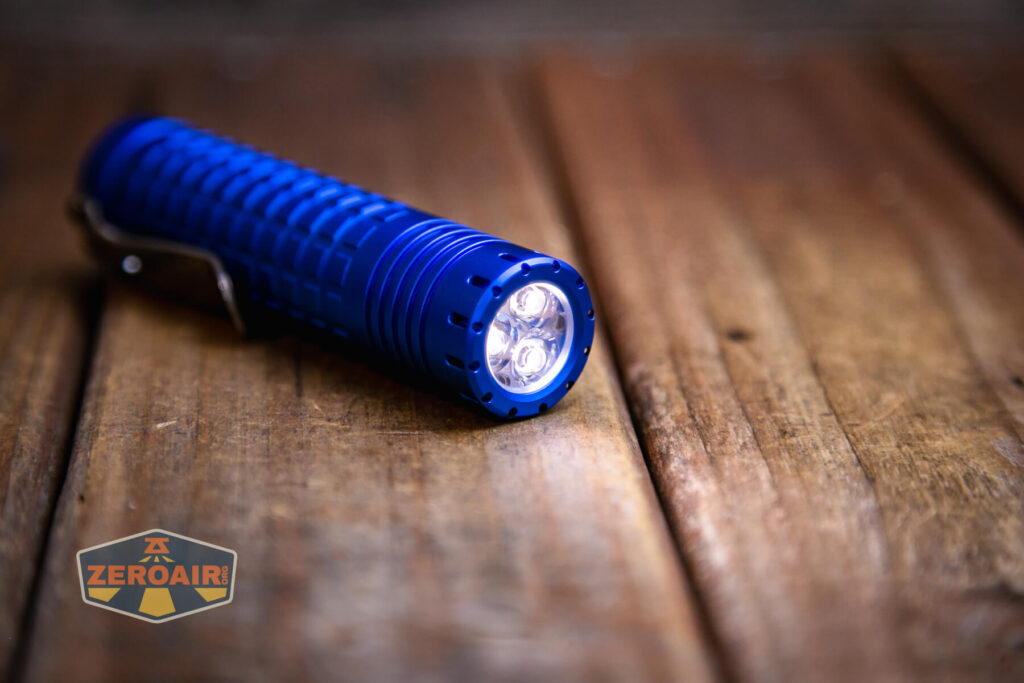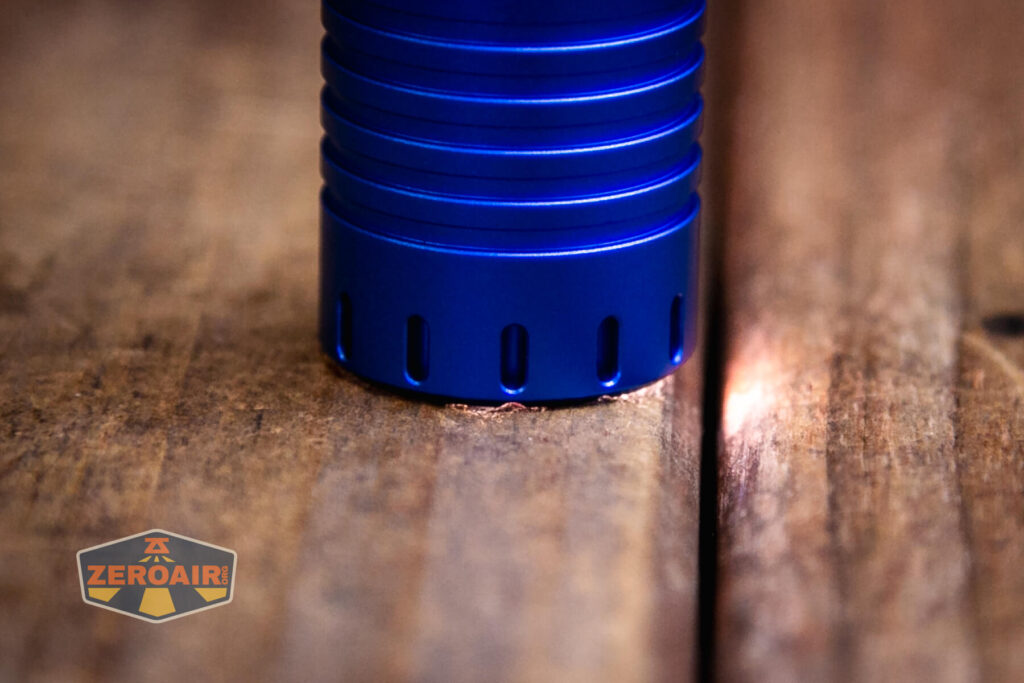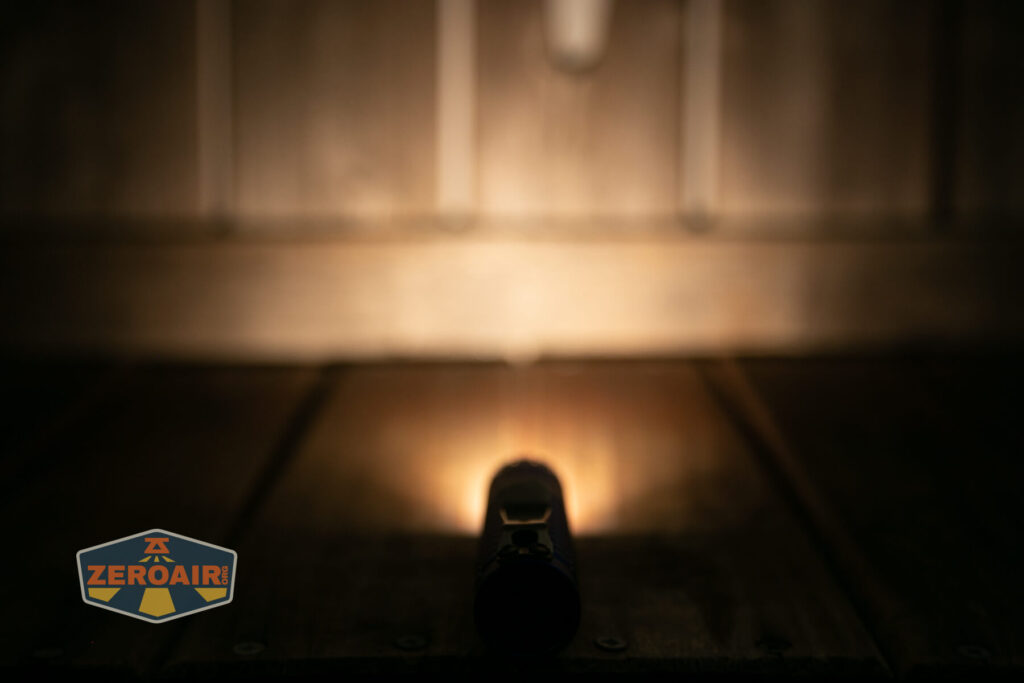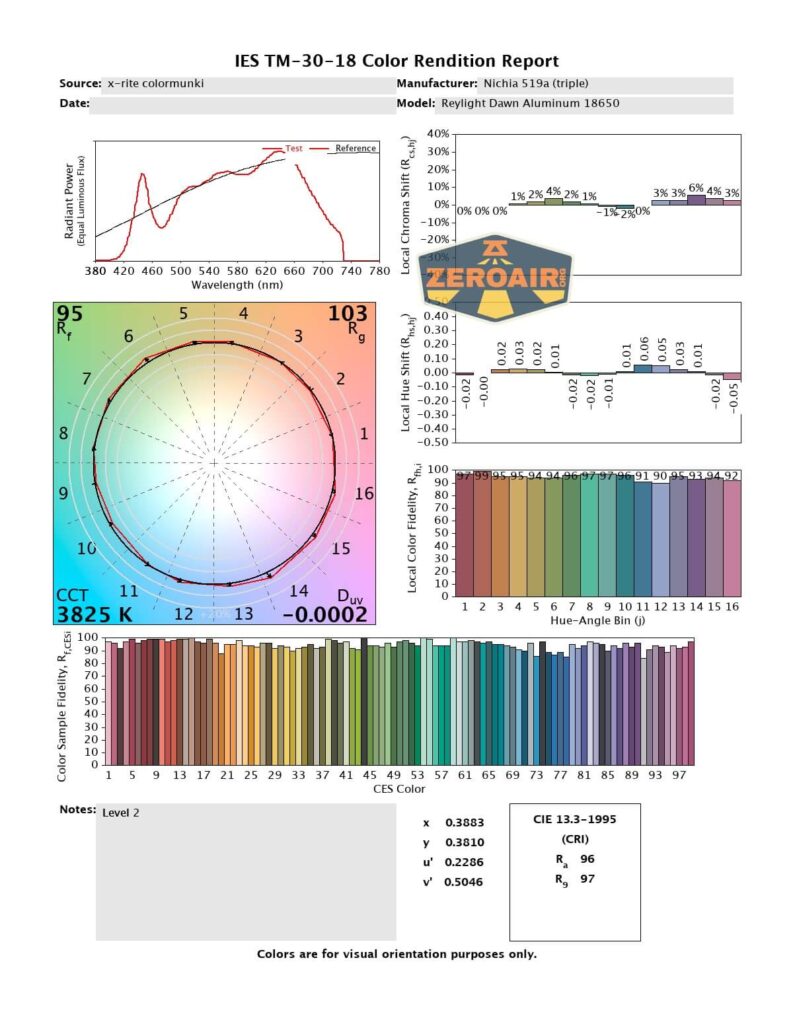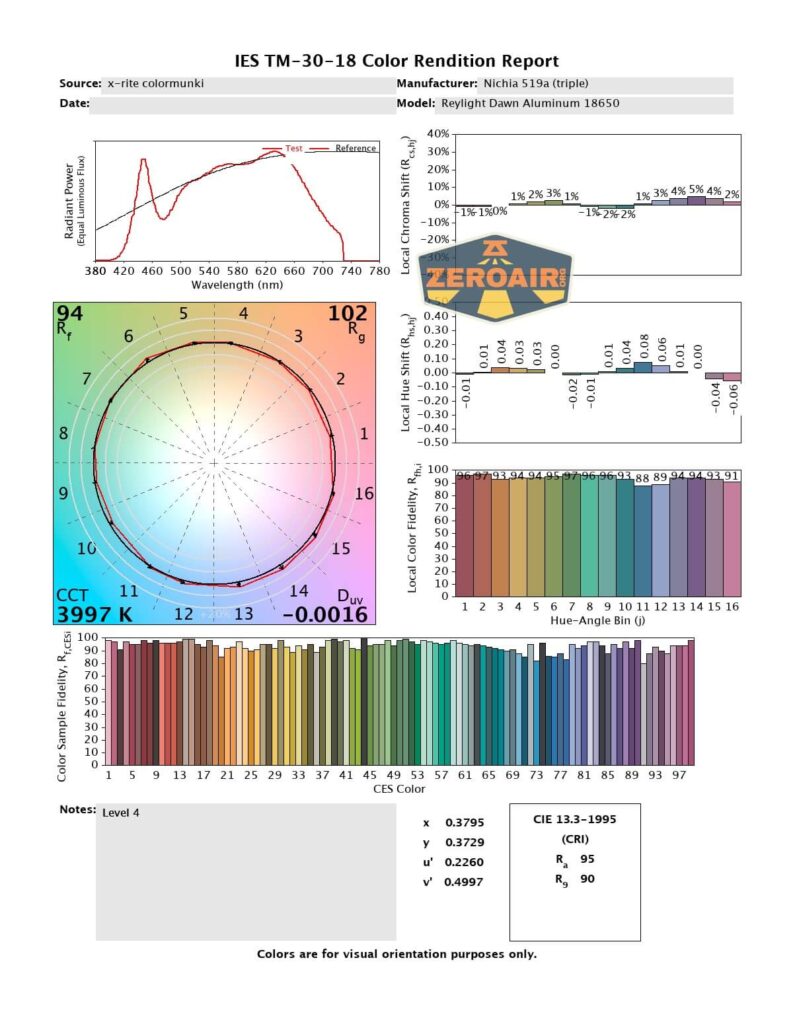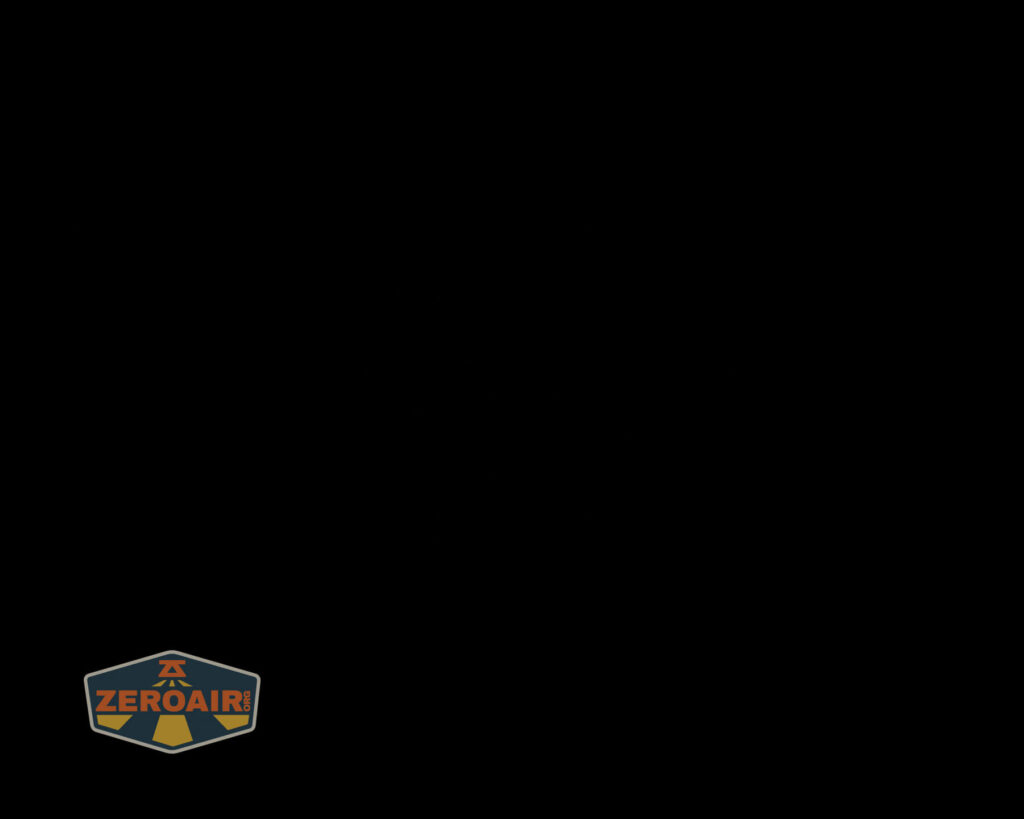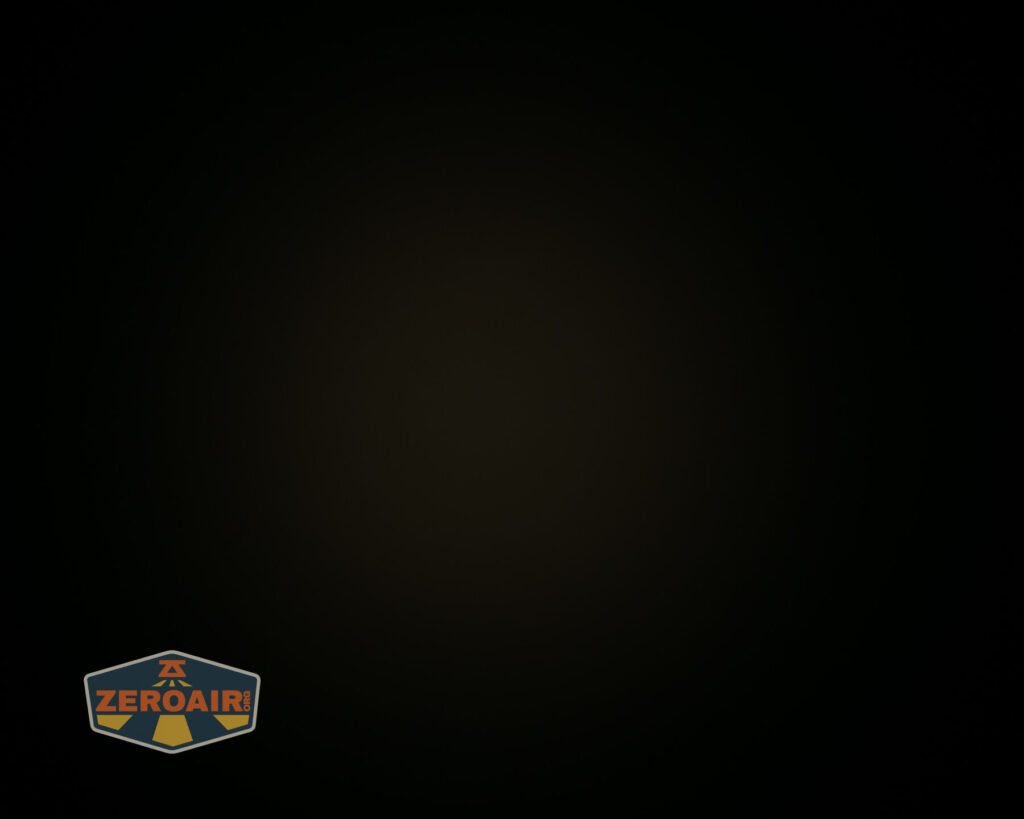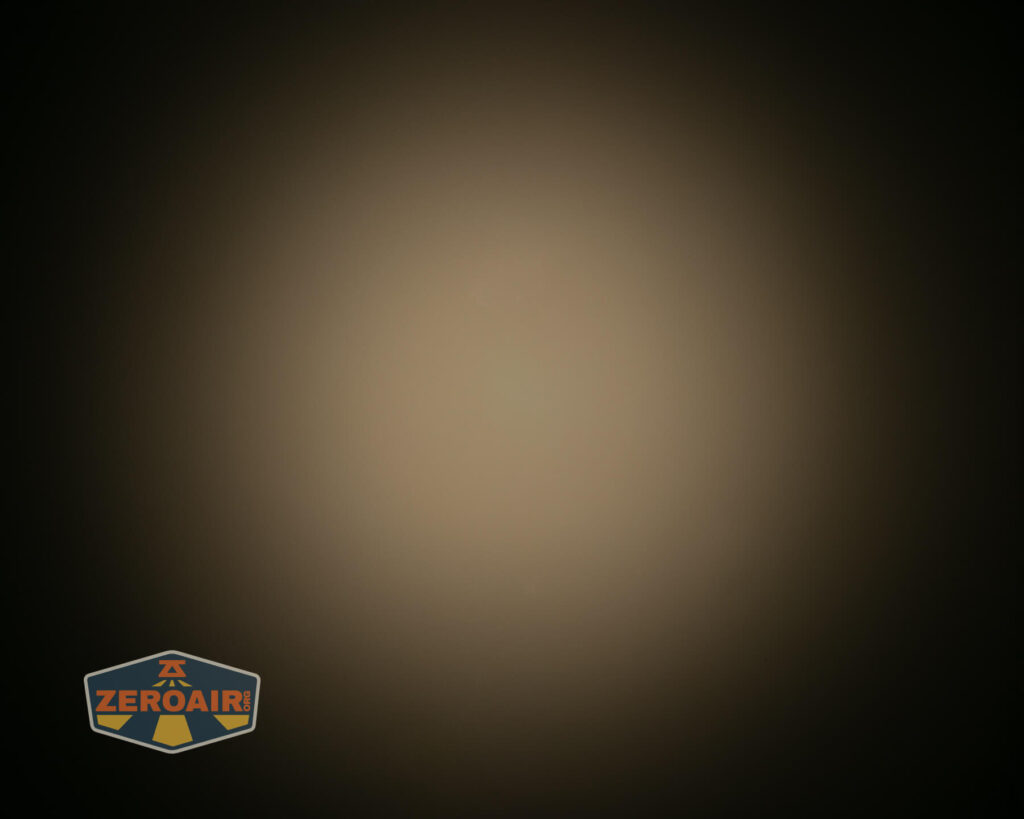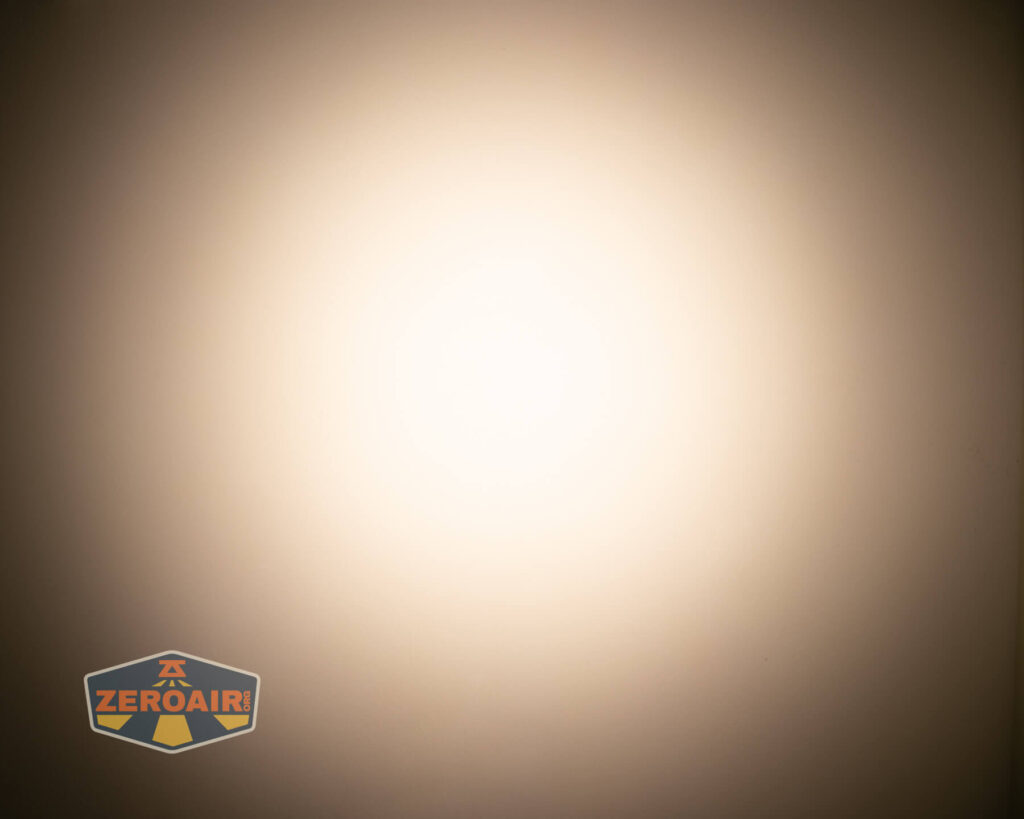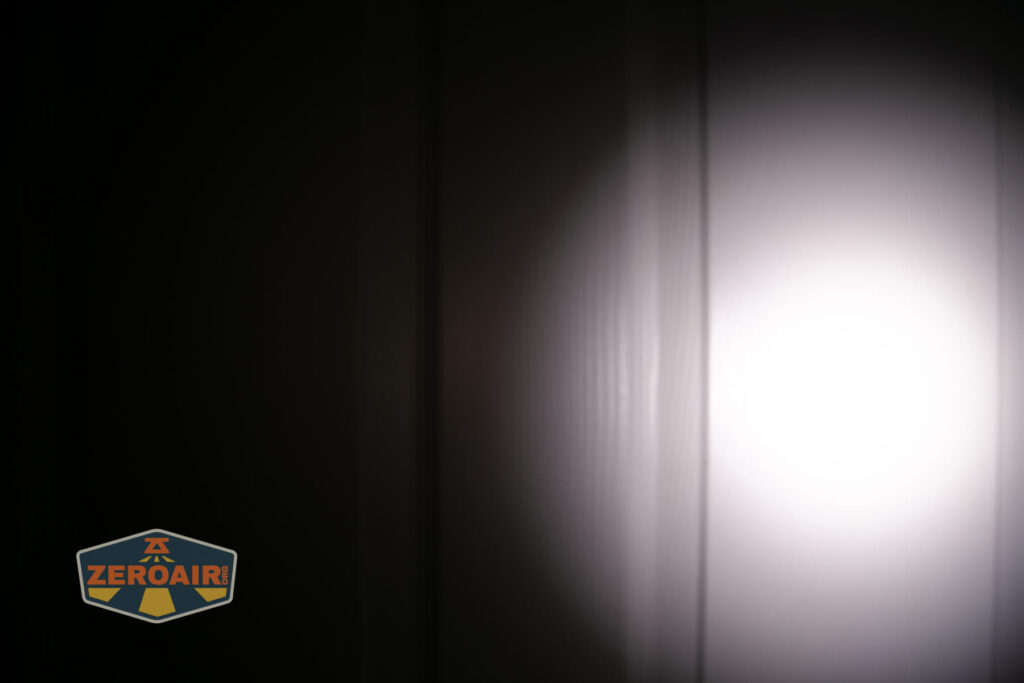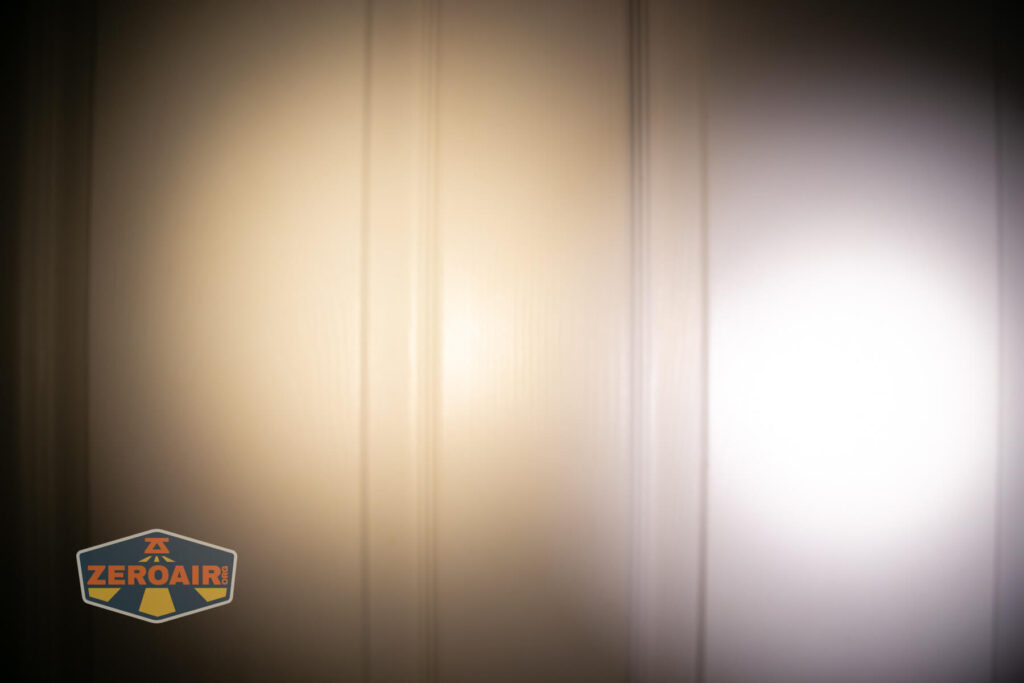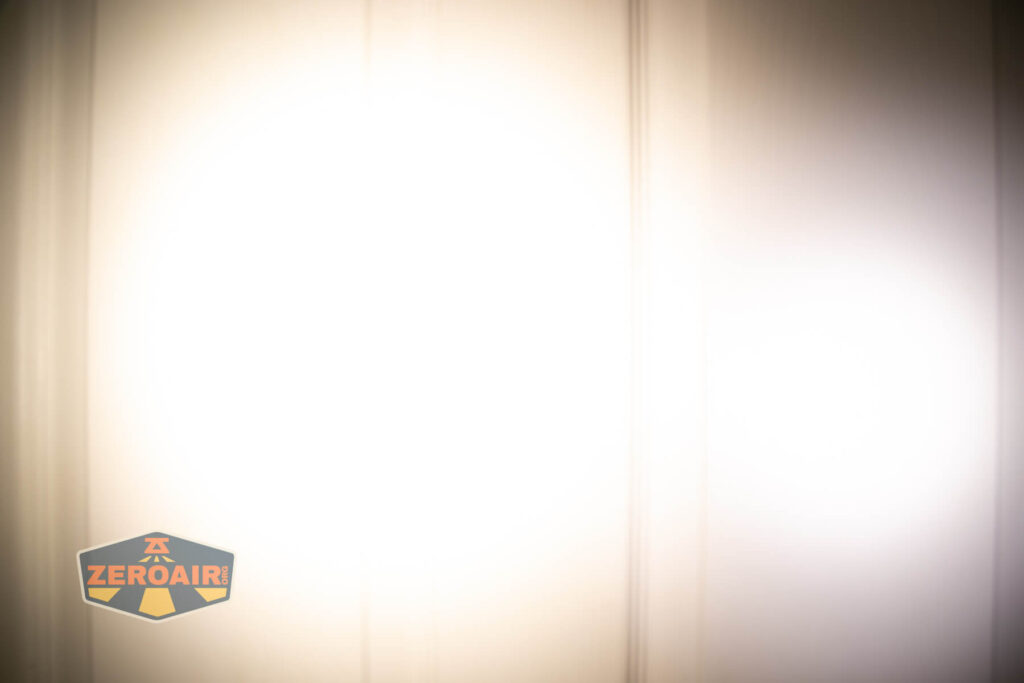ReyLight Dawn Aluminum 18650 Flashlight Review
This ReyLight Dawn Aluminum 18650 flashlight is a programmable, triple-emitter light with tritium slots! Read on for testing!
Official Specs and Features
Here’s a link to the ReyLight Dawn Aluminum 18650 flashlight product page.
Versions
Many versions of the ReyLight Dawn exist. I’d consider this to be a “new” version, though – name it how you like. Namely, it’s different in that this 18650 version uses a completely separate body from the 18350 version. Older versions used an extension tube – more on that later!
Since ReyLight is moving shops (as far as I understand) and selling out current inventory (as far as I understand) for a two-for-one deal, I can’t locate the Dawn Aluminum 18650 flashlight on the website to be able to identify all the options. I believe there are three (red, black, blue) or so colors of the aluminum version, and it’s available in 18650 and 18350 formats.
Price
Again, I can’t find this Dawn on the ReyLight website, but I think it retailed for around $69. (Confirming using the wayback machine here.) The 18350 version is $6,9 and the 18650 version is $79.
Short Review
I always appreciated the 18350 version of the ReyLight Dawn (again, more on that later). I have a special appreciation for this 18650 version, and I really do love it! This 18650 versio,n coupled with the 18350 version (and yes, you should buy both,) makes for a great combo! Aluminum is great too – aluminum is one of the best materials for flashlights. The blue color (and other colors, too, for that matter) looks great. I love the emitter choice on this Dawn. The user interface is great. That this Dawn offers many Tritium slots is great. This is just a great light!
Long Review
The Big Table
| ReyLight Dawn Aluminum 18650 Flashlight | |
|---|---|
| Emitter: | Nichia 519a (Warm White) |
| Price in USD at publication time: | $79.00 |
| Cell: | 1×18650 (included, Samsung 30Q) |
| Turbo Runtime Graph | High Runtime Graph |
| LVP? | Yes |
| Switch Type: | Mechanical |
| On-Board Charging? | No |
| Claimed Lumens (lm) | 1800 |
| Measured Lumens (at 30s) | 1492 (82.9% of claim)^ |
| Candela per Lumen | 2.8 |
| Claimed Throw (m) | – |
| Candela (Calculated) in cd (at 30s) | 185lux @ 4.963m = 4557cd |
| Throw (Calculated) (m) | 135.0 |
| Claimed CCT | 4000 |
| Measured CCT Range (K) | 3600-4000 Kelvin |
| Item provided for review by: | ReyLight |
| All my ReyLight reviews! | |
^ Measurement disclaimer: Testing flashlights is my hobby. I use hobbyist-level equipment for testing, including some I made myself. Try not to get buried in the details of manufacturer specifications versus measurements recorded here; A certain amount of difference (say, 10 or 15%) is perfectly reasonable.
What’s Included
- ReyLight Dawn Aluminum 18650 flashlight
- Samsung 30q 18650
- Spare o-rings (2)
Package and Manual
No manual is included. As I always say (or at least hope), I aim for this post to be sufficient to use as a manual!
Build Quality and Disassembly
I have always appreciated the Dawn. Let me add right here and upfront why I never owned one. The extension tube that allowed the use of n 18650 cell had a frag pattern that didn’t align with the main body. That was simply a deal breaker for me. BUT! Rey (of ReyLight) has fixed that with this aluminum iteration. And he fixed it in a way that I actually appreciate, too – the 18350 body (seen in another review) and the 18650 body are completely separate bodies! No more extension tubes.
To be clear, I actually like extension tubes just fine. For a while, I wished that’s what the TorchLAB BOSS had used. But separate bodies have grown on me, and I really like them now.
But on to the ReyLight Dawn Aluminum 18650 flashlight specifically. This light is well-built and also quite attractive. The blue really pops!
Both head and tail have a nice spring – the head has what I’d call a “q-lite” spring, but that’s not a bad thing for this application.
Check out the body – that frag pattern (maybe not the official name, and not exactly a frag pattern as used by other makers) looks great and notably is all lined up properly (which makes sense, because it’s just one piece there.) The head (left side, below) has some cooling fins that are fairly shallow, but check out all those tritium slots!! You’ll get a better view later, but those are peekaboo slots; they’re visible from the front, too!
Size and Comps
If the flashlight will headstand, I’ll show it here (usually the third photo). If the flashlight will tailstand, I’ll also show that (usually in the fourth photo).
Here’s the test light with the venerable Convoy S2+. Mine’s a custom “baked” edition Nichia 219b triple. A very nice 18650 light.
Also above on the left is a new feature light!! Laulima Metal Craft sent this Todai in tumbled aluminum for some size comparison photos like the ones above. Laulima has a bunch of incredible items. I’ve tested one (the Laulima Metal Craft Hoku) (the official site for Hoku is here) that was a Friend Fund Friday review. I was impressed enough by that Hoku that I bought a Laulima Metal Craft Diamond Slim (also in tumbled aluminum) (review is upcoming!) These lights by Laulima have impeccable build quality and not only that, they’re quite configurable. There are some (great, actually) default configurations, but Joshua Dawson (of Laulima Metal Craft) is open to ideas and emitter options and the like. I haven’t reviewed this Todai, but I have to say, it feels absolutely fantastic and I love it thus far. (Notably, I love how warm and eggy those emitters look through the TIR.)
Retention and Carry
A pocket clip is included and attached to the ReyLight Dawn Aluminum 18650 flashlight.
That’s the standard ReyLight stainless steel pocket clip, and I really like it. It has a nice, big mouth, nicely smoothed edges, and just overall great utility. Based on the shape, in my hea,d I call this the “Platypus” clip.
It’s held in place by two Torx screws, and I believe it has “standard” hole spacing.
Also included is the orange plastic case that’s shown above.
Power and Runtime
Power to the ReyLight Dawn Aluminum 18650 flashlight is from an included Samsung 30Q 18650 cell. This cell is a standard flat-top 18650. Please do note that you should not use two 18350 cells in the 18650 body Dawn!
The cell goes into the Dawn in the usual direction – the positive end goes toward the head.
Below are a couple of runtime graphs.
The light does seem to have low voltage protection, which kicks in around 3V.
Modes and Currents
For this table, I tested only the default mode groups.
| Mode | Mode Claimed Output (lm) | Claimed Runtime | Measured Lumens | Tailcap Amps |
|---|---|---|---|---|
| 100% | 1800 | – | 1492 | [MAX] (As many as the cell can supply) |
| 20% | 360 | – | 310 | 0.70 |
| 2% | 36 | – | 42 | 0.15 |
| Moonlight | – | – | 0.66 | ~0 |
Pulse Width Modulation
PWM is present in the higher three default modes. It’s fast, though, and you’re very unlikely to be able to see it (without a scope).
Here you can see a “baseline” – a chart with almost no light hitting the sensor.
Then there’s the Ultrafire WF-602C flashlight, which has some of the worst PWM I’ve seen. It’s so bad that I used a post about it to explain PWM! Here are multiple timescales (10ms, 5ms, 2ms, 1ms, 0.5ms, 0.2ms) to make comparing this “worst” PWM light to the test light easier. That post also explains why I didn’t test the WF-602C at the usual 50us scale.
User Interface and Operation
On the ReyLight Dawn is a reverse mechanical clicky switch. The switch has a metal cover and, as stated above, three tritium slots.
The switch is very much like many other ReyLight flashlights, including the recently reviewed Rook (by Vosteed).
Here’s a user interface table! The user interface is actually the same as is used on some ReyLights, including the LANapple I recently tested.
| State | Action | Result |
|---|---|---|
| Off | Click | Moonlight^ |
| On | Click | Off |
| On | Half Press | Cycle modes (Moonlight, 2%, 20% ,100%)^^ |
| On | Tap 8x | Enters programming mode^^^ |
| On | Hold briefly | Return to Moonlight |
| On | Double tap | Turbo |
^ If the light is turned back on soon after turning off (within a couple of seconds), the previous mode will be remembered. If more than 2 seconds, the light will turn on into Moonlight.
^^ The light is user programmable, so only the default output levels are listed here.
^^^ In programming mode, the emitter will blink, then strobe. There are five selections a user can make in programming mode. The selections follow a “blink then strobe.”
The first group blinks once then strobes. This is the mode group selection.
The second group blinks twice then strobes. This is the memory toggle.
The third group blinks three times then strobes. This is the moonlight toggle.
The fourth group blinks four times then strobes. This is the mode order toggle (lowest to highest or highest to lowest).
The fifth group blinks five times then strobes. This is the factory reset option.
To interact with any of the programming options, you must tap during the strobe section following that option. So to toggle the memory, first enter programming, then wait until the strobes after the second blink. Tap the switch. I did say “tap,” but a full click probably works just fine, too.
LED and Beam
What I have is the Nichia 519a version. Since I can’t really access the Dawn product page, I can’t say whether that’s all you could get other emitters or not, but I do know Rey has offered many (most recently Cree XP-L HI, in the Rook). Either way, this 4000K 519a is what you probably want anyway.
The “4000K” is maybe a touch warmer than you might have expected.
LED Color Report (CRI and CCT)
As with most (all?) of the other Nichia 519a emitters I’ve tested, both CRI and CCT are great. CCT comes in below the claim, at between 3500K and 3800K. For me, that’s great. If you wanted something more neutral, though, this might be too warm for you. CRI is great, and nearly “perfect.”
Beamshots
These beamshots always have the following settings: f8, ISO100, 0.3s shutter, and manual 5000K exposure. These photos are taken at floor level, and the beam hits the ceiling around 9 feet away.
Tint vs BLF-348 (KillzoneFlashlights.com 219b version) (affiliate link)
I keep the test flashlight on the left and the BLF-348 reference flashlight on the right.
I compare everything to the KillzoneFlashlights.com 219b BLF-348 because it’s inexpensive and has the best tint!
Conclusion
What I like
- Uses Nichia 519a
- Nearly perfect CRI
- Warm white (at around 3800K)
- Good user interface (somewhat programmable)
- Uses aluminum (which brings the cost down from the older titanium versions)
- The “hold for moonlight” option
What I don’t like
- Output is dependent upon the cell being used
- Not available as a “kit” with one head and both sizes of bodies
- So much of the optic is covered by the flashlight body (I want a larger opening for light to escape)
Notes
- This content originally appeared at zeroair.org. Please visit there for the best experience!
- Please use my amazon.com referral link to help support zeroair.org!
- Please support me on Patreon! I deeply appreciate your support!





